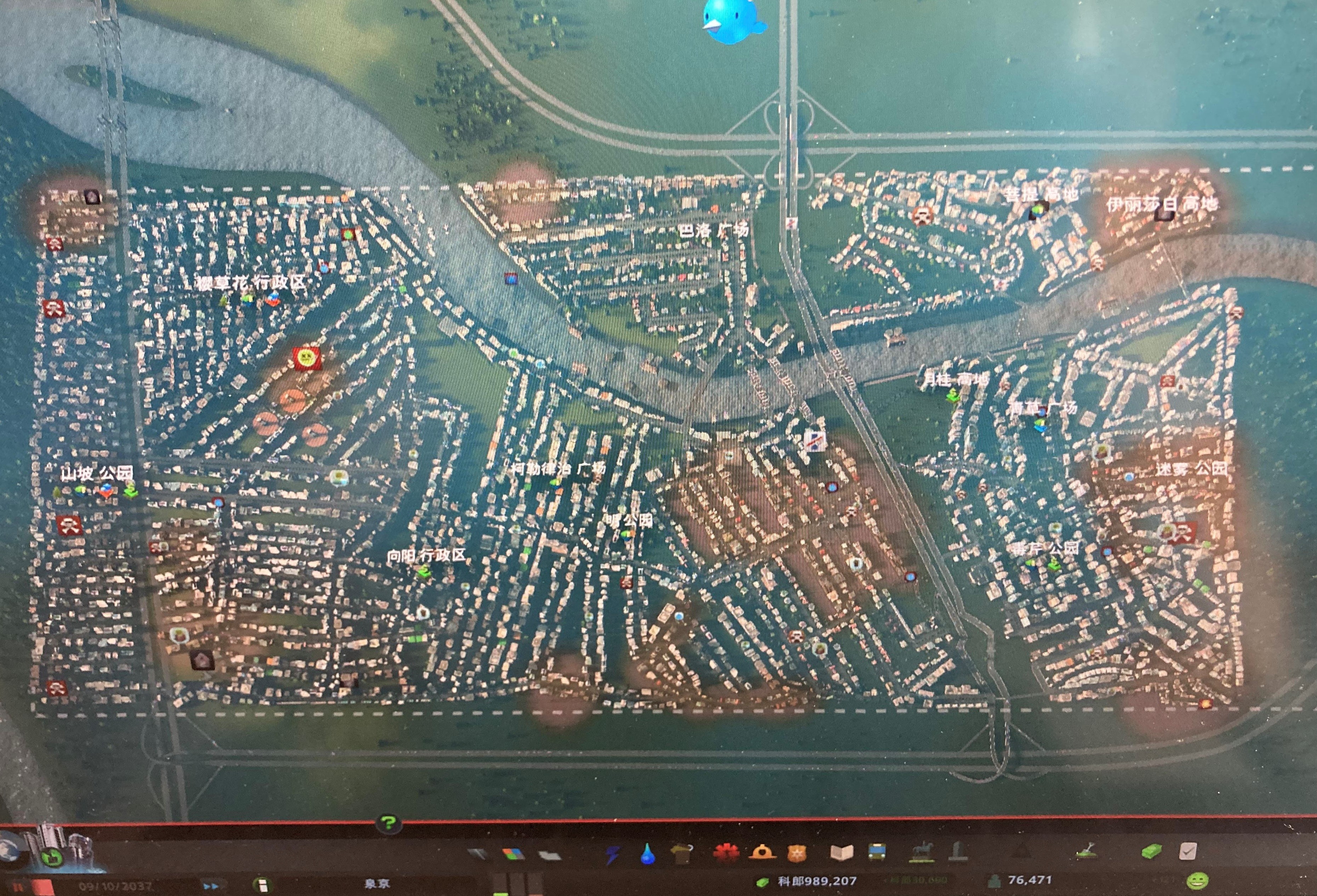In my last post, I mentioned the death and collapsed health system due to the traffic jams. These issues began in the second week of playing the game. Suddenly, people on the same streets and city blocks fell ill, but there weren't enough ambulances to transport them to the hospitals. I did not know why the number of patients abruptly increased, so I searched online and guessed it was because the first generation in the city had gotton older and natually developed illnesses.
However, such scenes continued for years in the game, with diseases still accumulating in the same districts. I thought that maybe I hadn't built enough hospitals to provide medical service, so I demolished some residential buildings (due to space constraints) and constructed a few clinics and hospitals. Even though health services covered the entire city and every district, ambulances could not reach patients' building. One reason, as I mentioned in the last post, was the terrible traffic congestion. Another reason was that multiple people became ill in the building, while ambulances could only transport one person a time. Meanwhile, the number of patients rose so quickly that the ambulances couldn't keep up.
More serious issues plagued the city: the population aged, and millions of people (mostly from the first generation) died. In addition to the death caused by unknown illnesses in certain city blocks I mentioned earlier, the crematorium services and the entire city's traffic became chaotic. The population declined, and because I had maintained too many health sercives buildings (due to the collapsed health system), the city's budget was nearly depleted.
Fortunately, I had saved the game before the death tide, so I paused the game and reverted back to that period. I couldn't remember when or why I had clicked the pollution button, but I discovered that the land near the industrial areas was polluted. I thought the office zones alone could generate enough income for the city, so in the interest of sustainability, I demolished all the industrial areas and replaced them with office and business zones. Gradually, the land pollution decreased, and I noticed a decline in the number of patients near those old industrial areas.

Pollution (brown parts) before reallocation
I still observed some land pollution even though there was no industrial zone nearby. After some investigation, I realized that I had placed some trash incineration plants close to the residential areas. It was impossible to destroy them because I didn't have enough budgets to support recycling policies, and the city needed those buildings to handle waste.
To solve this problem, I built some roads at the far end of the city and relocated the waste disposal stations there, ensuring that pollution would not be near residential areas. Miraculously, during later hours, hardly any new patients appeared in the districts surrounding the original trash stations.
So my conclusion is to keep industrial zones or trash disposal plants away from residential areas. This not only helped maintain residents' health but also saves medical system's budget since fewer patients mean fewer medical needs. Preventing diseases can be more crucial than treating them.
In addition, the relationship beween health and pollution reminded me of a march against the construction of a new chemical factory in my hometown in 2012. When I was yound, I witnessed a small protest at the city center. If you are interested, you can search for "Ningbo PX". I do not know much about the news and economics, but based on the simulation in Cities: Skylines, my only suggestion is that factories and residential areas maintain a distance. Otherwise, factories become burdensome for both residential health and the medical system.
Last modified on 2023-06-01